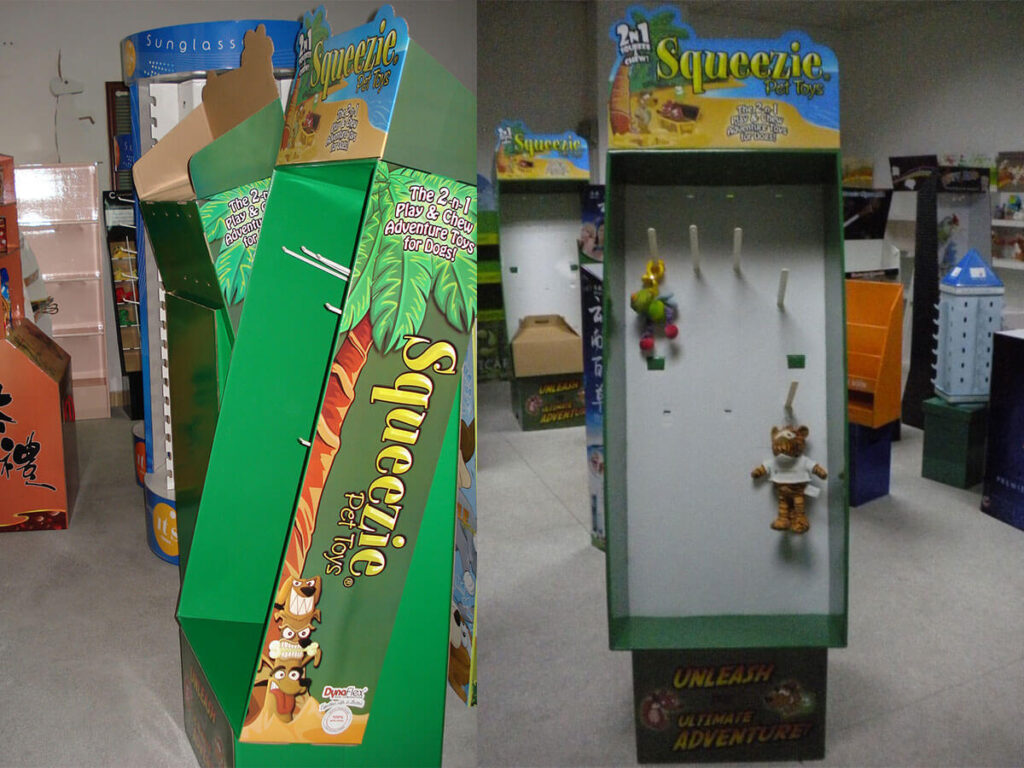As environmental awareness continues to grow, businesses are increasingly looking for sustainable solutions in all areas of their operations, including marketing and retail. Cardboard displays, long favored for their affordability and versatility, are now being embraced not just for their functionality but for their eco-friendly properties. As we move into 2025, several sustainable trends are shaping the way cardboard displays are manufactured, designed, and used. In this blog, we’ll explore the key sustainability trends in cardboard display manufacturing that are set to take center stage in the coming year.
1. Use of Recycled and Recyclable Materials
One of the most significant sustainable trends in cardboard display manufacturing is the shift towards using recycled and recyclable materials. As more consumers and brands prioritize eco-consciousness, the demand for displays made from post-consumer recycled (PCR) cardboard has grown.
Manufacturers are increasingly using high-quality recycled materials to create displays that maintain the durability and appearance of new cardboard, while also reducing the reliance on virgin paper. Additionally, more companies are adopting 100% recyclable materials for their displays, ensuring that they can be reused and repurposed after their shelf life is over, minimizing waste.
2. Eco-Friendly Inks and Adhesives
Another key sustainability trend is the adoption of eco-friendly inks and adhesives in the production of cardboard displays. Traditional inks and adhesives often contain harmful chemicals that can have a negative impact on the environment. As a result, many manufacturers are now turning to water-based inks and non-toxic adhesives, which are less harmful to both the environment and workers.
Water-based inks are not only more sustainable but also produce vibrant colors and detailed designs, making them an excellent choice for custom-printed displays. These inks are free of volatile organic compounds (VOCs), which contribute to air pollution and can harm the ozone layer.
3. Lightweight and Efficient Designs
As sustainability becomes a higher priority, manufacturers are focusing on creating lightweight yet sturdy cardboard displays. The use of minimal material without compromising on strength allows for more efficient production and transportation. Lighter displays reduce transportation costs and fuel consumption, which is a significant factor in lowering the carbon footprint of a display’s lifecycle.
Efficient designs also mean less waste in the manufacturing process, as fewer materials are needed to create a functional and attractive display. The trend towards flat-pack displays, which are easy to assemble and ship, is growing, helping reduce the environmental impact of shipping and storage.
4. Biodegradable Coatings and Finishes
In 2025, we expect to see more biodegradable coatings and finishes being used on cardboard displays. These coatings are applied to protect the cardboard from wear and tear, moisture, and other environmental factors, but traditional coatings can often be non-biodegradable and harmful to the environment.
In response, many manufacturers are now offering biodegradable alternatives, which break down naturally and don’t contribute to long-term waste. These coatings are made from natural substances, such as plant-based oils and resins, that provide similar protection to conventional coatings while being more environmentally friendly.
5. Design for Reusability and Longevity
As sustainability efforts increase, brands are focusing on the longevity and reusability of their cardboard displays. Rather than being designed for single-use or short-term campaigns, more displays are being manufactured with the intention of being reused for multiple product launches or seasons. This shift towards more durable and versatile designs reduces the need for constant reordering of new displays, lowering waste and cost.
Displays are also being designed with easy disassembly in mind, allowing for the separation of different materials (such as metal components or plastics) from the cardboard for easier recycling or reuse.
6. Local Manufacturing and Sourcing
To further reduce their environmental footprint, many cardboard display manufacturers are shifting towards local sourcing and production. By manufacturing displays closer to the point of sale, businesses can significantly reduce the carbon footprint associated with transportation and logistics.
This trend also helps support local economies and ensures that displays meet regional sustainability standards. Additionally, local production allows for faster turnaround times and the ability to quickly adapt to changing market needs.
7. Sustainability Certifications and Transparency
As consumers become more conscious of the environmental impact of the products they purchase, businesses are responding by being more transparent about their sustainability practices. Manufacturers are increasingly seeking certifications like FSC (Forest Stewardship Council) and SFI (Sustainable Forestry Initiative) to demonstrate that their cardboard displays are sourced responsibly from well-managed forests.
Transparency in sustainability practices is becoming a key selling point for brands. Companies are not only promoting the eco-friendly aspects of their displays but also providing detailed information about their production processes, material sourcing, and recycling initiatives.
8. Interactive and Engaging Displays with Sustainability Messaging
As part of a broader trend toward brand transparency, many companies are incorporating sustainability messaging directly into the design of their cardboard displays. Customers are increasingly looking for brands that align with their values, and retailers are responding by making sustainability a central part of the display experience.
Interactive displays that educate customers about the eco-friendly features of the product or the display itself are becoming more popular. These displays might feature QR codes that link to sustainability reports or social media campaigns that highlight the brand’s commitment to the environment.
Conclusion
Sustainability is no longer just a trend—it’s a necessity. As we approach 2025, cardboard display manufacturers are embracing innovative ways to reduce their environmental impact while still delivering high-quality, visually appealing displays. From using recycled materials to incorporating biodegradable finishes and creating reusable designs, the cardboard display industry is taking significant steps toward a greener future.
At Packwins, we are committed to incorporating sustainable practices in every stage of the design and manufacturing process. Our goal is to help businesses promote their products in a way that’s both effective and environmentally responsible. Reach out to us today to learn more about how our sustainable cardboard displays can help your brand stand out while protecting the planet.




